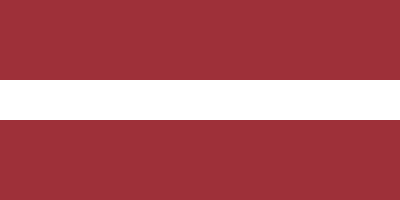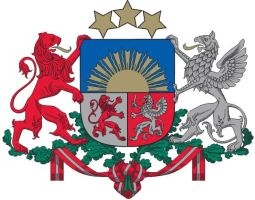The flag of Latvia
The flag of the Republic of Latvia is a carmine red with a white horizontal stripe.
The colour proportions of the flag of the Republic of Latvia is 2:1:2.
The ratio of the height of the flag to its width is fixed at 1:2.
The flag of Latvia has a long history, as it was first mentioned in the chapters of the Rhymed Chronicle of Livonian in the 13th century.
Having regard to that historical record, both patriotically minded individuals and organisations used the flag in the 19th century. In 1917, a red-white-red flag was used in several events aimed at uniting the regions of Latvia. Under the influence of those political processes, the issue of the appearance of the Latvian flag was raised. The debate resulted in a sketch prepared by artist Ansis Cīrulis that gained the most popularity.
On 15 June 1921, the Constitutional Assembly adopted the Law on the Flag and Coat of Arms of the Republic of Latvia.
The distinctive (carmine) red colour of the flag was described in the government document for the first time in 1922 so that the flag could be more easily distinguished from the similarly coloured national flag of Austria.
Following the occupation of Latvia in 1940, the use or possession of this flag was considered punishable by law. The flag reappeared in the second half of the 1980’s when it was widely used during the Awakening movement, and its status of the national flag was restored on 27 February 1990.





